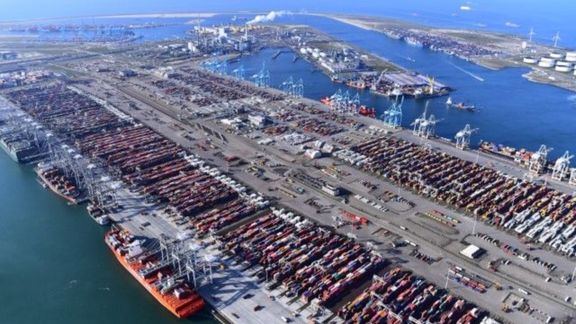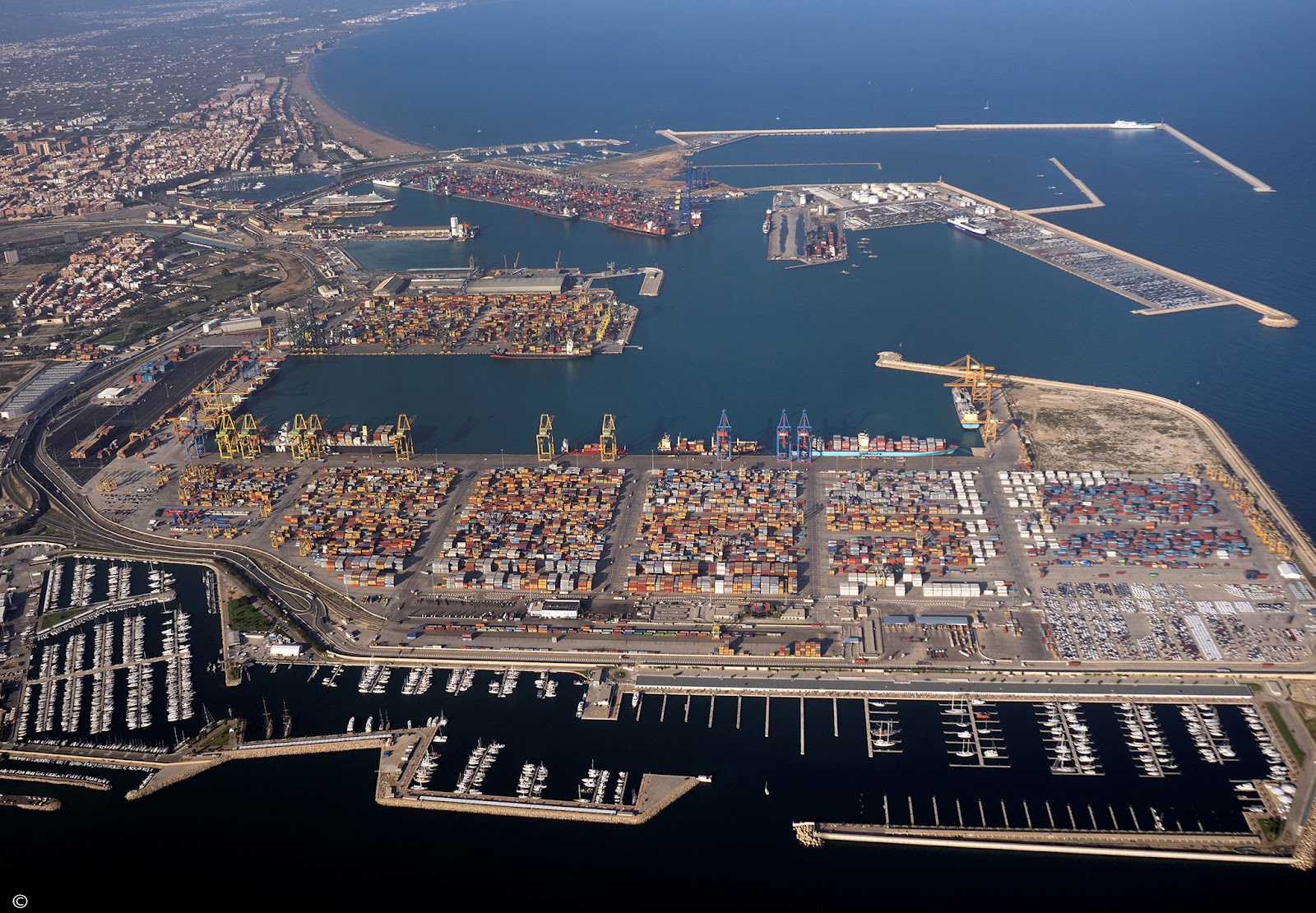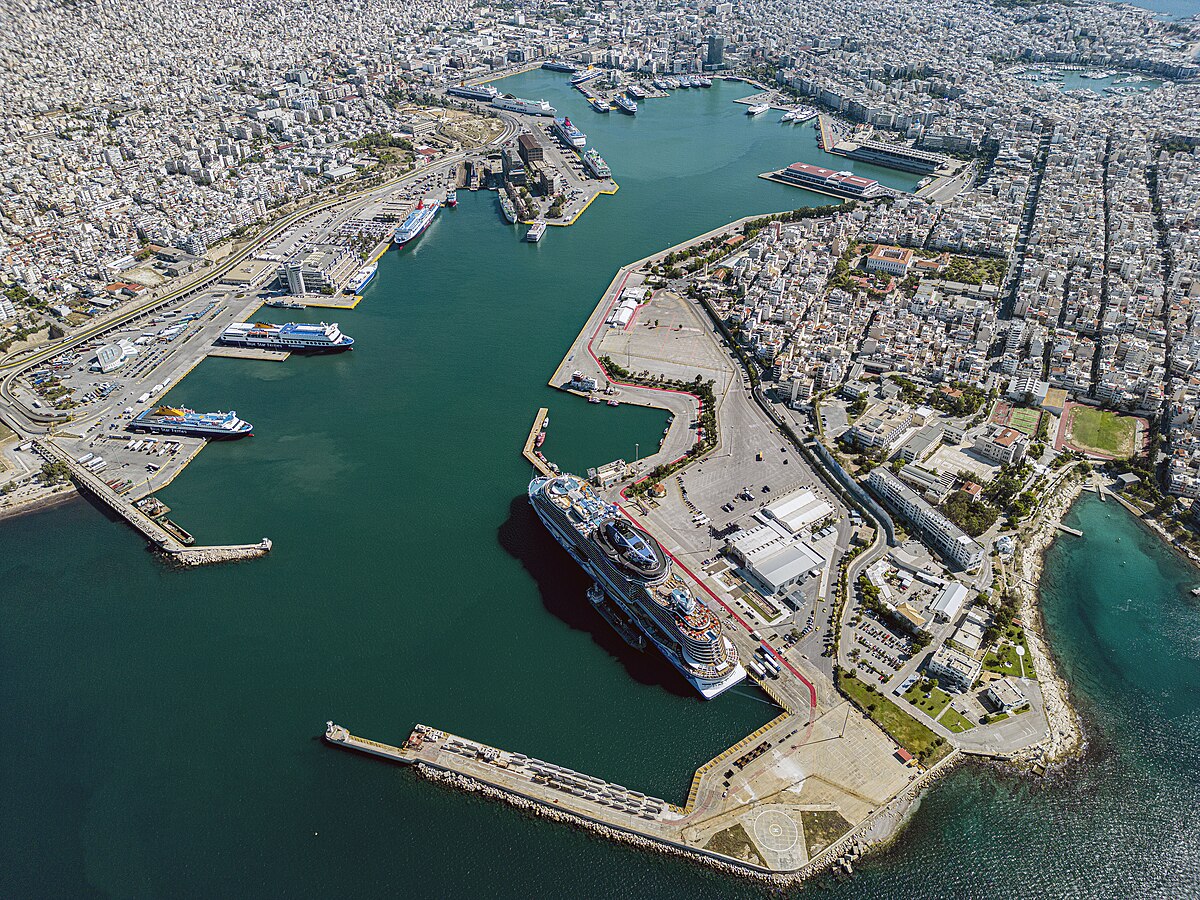Articles
Exploring the 8 Biggest Ports in Europe
Europe is home to some of the world's busiest ports, each bustling with container traffic and equipped with state-of-the-art terminals. Understanding the intricacies of this maritime landscape is essential for those interested in ecommerce business scalability. The right port selection can drastically improve operational efficiency, reduce costs, and ensure access to the EU markets.
This article delves into the eight biggest ports in Europe that can significantly streamline your supply chain. We'll explore how these harbours, each under the vigilant eye of its port authority, stand as key players in the international trade arena. They are vital for any enterprise seeking to fine-tune its import tactics, offering unique advantages to make logistics smoother and more effective.
Top 8 Largest Port Hubs in Europe
Here is the list of the biggest and fastest-growing container ports in Europe:
- Port of Rotterdam
- Port of Antwerp-Bruges
- Port of Hamburg
- Port of Valencia
- Port of Piraeus
- Port of Algeciras
- Port of Bremerhaven
- Port of Barcelona
Port of Rotterdam, The Netherlands

- 2023 total throughput: 13.4 million TEUs (Twenty-Foot Equivalent Units)
Despite a marginal dip in container throughput, the port of Rotterdam’s resilience and strategic prowess have not just sustained but bolstered its position as a leader in European maritime trade.
Its prime location at the mouth of the Rhine-Meuse-Scheldt delta connects it seamlessly to major European industrial and economic centres. This strategic positioning allows it to serve as a primary gateway for goods entering and leaving the continent, making it an indispensable node in the global supply chain.
Moreover, the port is a frontrunner in adopting cutting-edge technologies, from automated container terminals to advanced digital platforms like PortXchange, which optimises port calls and reduces waiting times. This technological edge not only enhances operational efficiency but also significantly reduces the environmental footprint, aligning with the global shift towards sustainable logistics.
The Maasvlakte 2 expansion has significantly increased the port's capacity, allowing it to accommodate the world's largest container ships with ease. This expansion is complemented by a network of state-of-the-art logistics facilities, multimodal transport links, and deep-water berths, ensuring that the port remains at the forefront of handling massive cargo volumes with unparalleled efficiency.
Rotterdam Port Facts
- Largest Dutch port in Europe and a global leader outside East Asia.
- Features a draft depth of 24 metres, accommodating some of the world's largest ships.
- Stretches over 40 kilometres, incorporating a mix of historic and modern harbour areas.
- Employs advanced automation, including robotic cranes and automated guided vehicles (AGVs) for container handling.
- Uses smart technology and IoT for efficient port management.
- Aims for zero emissions by 2050, reflecting its commitment to sustainability.
Port of Antwerp-Bruges, Belgium

- 2023 total throughput: 12.5 million TEUs
The Port of Antwerp-Bruges was born from the strategic merger of two Belgian maritime giants – the Port of Antwerp and the Port of Zeebrugge, signalling its emergence as a central hub in the European shipping landscape.
Antwerp, known for its extensive industrial and logistics zones, complements Zeebrugge's prowess in handling automotive and energy-related shipments. This fusion not only expands their collective capacity but also diversifies their service offerings, making the port a versatile and comprehensive maritime facility.
Antwerp-Bruges is pioneering in the use of digital tools for efficient port management and cargo handling. It has also embarked on ambitious sustainability projects, such as the development of green energy facilities and the implementation of measures to reduce carbon emissions, aligning with the global push towards eco-friendly shipping practices.
The port boasts deep-water berths capable of accommodating the largest vessels afloat, extensive drydock facilities, and a network of pipelines serving the chemical and petrochemical industries. Its multimodal connectivity, with excellent road, rail, and inland waterway links, ensures seamless transportation of goods to and from the hinterland, reinforcing its role as a key transit point in Europe.
Port of Antwerp-Bruges Facts
- Second-largest seaport in Europe.
- Located at the upper end of the tidal estuary of the Scheldt, enabling navigation by large ships over 100,000 Gross Tons up to 80 km inland.
- It features a strategic inland location, offering a more central European access point than most North Sea ports.
- Connected to the hinterland via rail, road, and river/canal waterways, ensuring efficient cargo movement.
- Offers liner services to 800 maritime destinations, demonstrating its extensive global network.
Port of Hamburg, Germany

- 2023 total throughput: 7.7 million TEUs
Hamburg's success is not just in its volume but in the equilibrium it maintains between imports and exports, a balance that is crucial for the stability and efficiency of global supply chains. This balance ensures a steady flow of goods in and out of Europe, making it a reliable and predictable hub for international traders and logistics companies.
Additionally, Hamburg has continuously upgraded its facilities to accommodate the latest generation of mega-ships, ensuring that it remains at the cutting edge of maritime logistics. Investments in digitalisation, such as smart port technologies, have further enhanced its operational efficiency, making it a model of modern port management.
It also features innovative container terminals, expansive warehousing, and specialised facilities for handling a diverse range of cargo. With connections to over 120 countries, it is a central node in international trade, bridging Europe with key markets around the world.
Hamburg Port Facts
- Germany's largest port, known as the "Gateway to the World".
- Spans an area of 73.99 square kilometres, with 43.31 square kilometres of land.
- Located on the River Elbe, 110 kilometres from the North Sea, ideal for large vessels.
- Historically, it has been Central Europe's main port for centuries, dating back to 1189.
- Transitioned from a traditional free port to modern logistics and container handling.
Port of Valencia, Spain

- 2023 total throughput: 5 million TEUs
Despite facing a slight decrease in container volumes compared to previous years, Valencia's ability to handle a substantial volume of cargo in the face of global trade fluctuations is a testament to its robust infrastructure and ideal location.
This resilience is crucial for businesses relying on a consistent and efficient route for goods moving in and out of Southern Europe. The port provides direct access to the Mediterranean Sea, making it an ideal hub for trade between Europe, North Africa, and the Middle East. This geographical advantage is complemented by excellent connectivity to major shipping routes. Moreover, its well-developed infrastructure supports a wide range of cargo types, from containerised goods to bulk and liquid commodities.
The economic impact of the Port of Valencia extends beyond its docks, contributing significantly to the regional and national economy. It is a vital employment generator and plays a key role in supporting various industries. Looking ahead, the port is poised for growth, with plans to expand its facilities and enhance its capacity to meet the increasing demands of global trade.
Port of Valencia Facts
- The fifth busiest port in Europe and the top port in the Mediterranean.
- Annual cargo volume reaches approximately 79.3 million tonnes (2022).
- Serves over 1.73 million passengers.
- Employs around 15,000 people.
- Operated by the Port Authority of Valencia.
- It features 40 berths and 72 piers and is equipped to handle a vast range of vessels.
Port of Piraeus, Greece

- 2023 total throughput: 4.59 million TEUs
Nestled in the heart of Greece, the Port of Piraeus stands as a testament to the dynamic growth and strategic importance of southeastern European maritime trade. This bustling port marked a significant milestone in its recent handling capacity, reflecting its rapid ascent as a key player in the region.
Significant investments, particularly from international partners, have been pivotal in upgrading its infrastructure. These collaborations have brought about not only physical expansion but also a fusion of global expertise and local knowledge, enabling Piraeus to offer services that are both world-class and uniquely tailored to the Mediterranean context.
Positioned at the juncture of Europe, Asia, and Africa, it serves as a natural bridge, facilitating a seamless flow of goods across continents. This positioning is enhanced by its proximity to the Suez Canal, making it a crucial asset in the maritime Silk Road and a gateway for Asian goods entering Europe.
It has pioneered the adoption of green port initiatives in the Mediterranean, striving to reduce its environmental footprint while maintaining operational excellence. The integration of smart technologies in port operations exemplifies its forward-thinking approach, setting new standards in efficient and eco-friendly maritime logistics.
Port of Piraeus Facts
- The chief port in Greece and a significant hub in the Mediterranean.
- Ranked as the fifth largest passenger port in Europe.
- Handles about 4.37 million passengers annually as of 2020.
- Serves as a crucial gateway for international trade and passenger travel.
- Plays a vital role in Greece's economy and the Eastern Mediterranean's maritime logistics.
Port of Algeciras, Spain

- 2023 total throughput: 4.6 million TEUs
The Port of Algeciras being at the crossroads of the Mediterranean and the Atlantic is one of its most significant advantages. Situated near the Strait of Gibraltar, it serves as a crucial gateway between Europe and Africa and is a key transshipment point for goods travelling along major global shipping routes. This unique positioning allows Algeciras to play a pivotal role in international trade, particularly in connecting European markets with African and American continents.
It has a variety of vessels, including large container ships, frequenting its docks. The port handles a wide array of cargoes, ranging from steel sheets and profiles to chemicals and wet bulk. This diversity in cargo types reflects the port's versatility and its ability to adapt to different logistical needs.
The Port of Algeciras has shown remarkable adaptability in responding to global trade dynamics. Its ability to handle large volumes of shipment, even in times of economic uncertainty, is a result of its flexible and robust operational strategies. The port has continuously evolved its facilities and services to meet the changing needs of the shipping industry, ensuring that it remains a reliable and efficient partner for global logistics operations.
Port of Algeciras Facts
- Serves as a major transhipment hub due to its strategic location near the Strait of Gibraltar.
- Managed by the Port Authority of Algeciras Bay, alongside the port of Tarifa.
- Ranked as the second largest port in the Mediterranean and 31st worldwide in container shipping.
- Features over 10 km of quays across different basins, catering to a wide range of passenger and freight traffic.
Port of Bremerhaven, Germany

- 2023 total throughput: 4.2 million TEUs
Bremerhaven's success story began in 1968 with the construction of a 700-metre long quay. Today, it boasts one of the world's longest coherent riverside quays, stretching nearly five kilometres with 14 berths for mega-container vessels. As the fourth-largest container terminal in Europe, Bremerhaven stands as a leading transshipment centre for intermodal import and export traffic.
Apart from container handling, Bremerhaven is renowned as one of Europe's leading car hubs, managing over two million vehicles in peak years. The port features extensive operating and storage areas, including covered storage for 45,000 vehicles. It also offers a range of services like finishing, repair, and retrofitting, highlighting its versatility beyond standard port operations.
The port is a key distribution centre for temperature-controlled cargo in Germany, with dedicated fruit terminals and the largest commercial cold store in the region. This specialisation in handling refrigerated and frozen goods positions Bremerhaven as a strategic location for managing import/export flows of temperature-sensitive commodities.
It is turning into a key hub for the offshore wind industry, reflecting its commitment to embracing new economic opportunities and sustainable energy sources. This diversification not only enhances its service portfolio but also aligns with global trends towards renewable energy.
Port of Bremerhaven Facts
- Part of the Ports of Bremen includes both Bremen and Bremerhaven ports.
- Managed by Bremenports GmbH & Co. KG, a company in public ownership.
- Bremerhaven Harbour is recognised as the world's busiest port for car transportation.
- The port's history dates back to the mid-13th century when the first port in Bremen was established on the Balge, a branch of the Weser River.
Port of Barcelona, Spain

- 2023 total throughput: 3.3 million TEUs
Located on the northeastern coast of the Iberian Peninsula, the Port of Barcelona’s proximity to major European markets and direct connections to the Mediterranean and beyond position it as a key player for transcontinental trade. The port's comprehensive network of sea routes, coupled with its efficient land connections, including the first direct freight rail connection with France, ensures seamless integration into global supply chains.
A recent collaboration with Novarium, a Quebec-based innovation hub, underlines its commitment to fostering a sustainable and innovative maritime sector. This partnership, aimed at building a vision for the blue economy, positions Barcelona as a leader in sustainable port operations and a catalyst for non-dilutive investment funding from Spain's Ports 4.0 Fund.
Recognising the growing importance of India in global trade, the Port of Barcelona has positioned itself as an ally for increasing commercial relations between India and Europe. Its role as a strategic hub for Europe and North Africa makes it an ideal partner for Indian companies looking to access one of the largest markets in the world, highlighting its importance in the global trade network.
Port of Barcelona Facts
- Managed by the Barcelona Port Authority.
- Covers an area of 10.653 square kilometres (1,065.3 hectares).
- Divided into three zones: Port Vell (the Old Port), the commercial/industrial port, and the logistics port (Barcelona Free Port).
- Ranked as the third largest port in Spain and ninth largest in Europe by container volume.
- Features include Maremagnum (a shopping mall and nightlife complex), a multiplex cinema, the IMAX Port Vell, and Europe's largest aquarium.
Examining the European Container Port Infrastructure
Beyond the mere handling of cargo, these ports distinguish themselves through a blend of efficiency, technological innovation, and seamless integration into global and continental logistics networks.
Volume of Cargo Handled
The volume of cargo managed by the port, quantified in tonnes or TEUs (twenty-foot equivalent units), is at the forefront of our assessment criteria. Giants like the Port of Rotterdam, Antwerp, and Hamburg set the standard in this domain, bustling with a continuous flow of goods.
Container Ship Capacity
A port's prowess isn't just in its size but in its sophistication in managing the behemoths of maritime trade – the container ships. The capacity to adeptly handle these vessels is a testament to a port's efficiency. Valencia emerges as a leader, showcasing exceptional container management capabilities.
Innovative Technological Infrastructure
The marriage of technological innovation with operational strength forms the backbone of a leading port. Automation, data analytics, and smart initiatives that enhance efficiency and transparency place ports like Rotterdam at the apex of technological advancement in the maritime sector.
Connectivity With the European Backdrop
No port is an island, metaphorically speaking. The integration of a port into Europe's vast network of roads, railways, and inland waterways is critical. Hamburg, for instance, exemplifies superior connectivity, acting as a pivotal hub in the continent's trade network.
Bezos: Your Gateway to Leveraging the Biggest Ports in Europe
In today’s fast-paced eCommerce landscape, mastering logistics and making smart use of key ports can make all the difference. Enter Bezos, your international fulfilment service provider, granting you access to the EU’s biggest ports. Our services are tailored to empower small and medium-sized online businesses with the kind of logistical support typically seen in the big leagues.

Seamless Integration With Major EU Ports
Imagine your products flowing smoothly through the heart of Europe, from Rotterdam’s bustling quays to the vast stretches of Antwerp-Bruges and beyond. Our extensive network doesn’t just cover the UK; it spans Europe, Australia, and New Zealand, placing you right where you need to be to drive global trade. This strategic positioning means your inventory is handled with the utmost efficiency, from storage to shipment.
Cutting-Edge Technology for Streamlined Operations
With our cutting-edge AI and logistics management software, you're always in the know. Your goods, whether navigating Valencia’s vibrant port or being processed in Piraeus’s high-tech facilities, are constantly under surveillance. This technology integration ensures fast, secure delivery through these essential trading posts.
Personalised Support and Global Expansion
Choosing Bezos means more than just picking a logistics service. It’s selecting a partner who’s invested in your expansion. Our account managers and customer support team are committed to ensuring your logistical needs are met with meticulous attention to detail. Whether you're a UK brand eyeing European markets or an Australian business expanding into the UK, Bezos is your trusted ally in navigating the complexities of international logistics.
Sustainable, Wallet-Friendly Shipping
We get it – cost-efficiency and sustainability are paramount. That’s why our solutions are designed to be as kind to your budget as they are to the planet. By leveraging the strategic locations of EU ports, we ensure your shipments not only cost less but also leave a lighter carbon footprint.
Ready to transform your eCommerce logistics and tap into the potential of Europe's largest ports? Get in touch with an expert today and experience a logistics solution that's tailored to your business's unique needs.
Conclusion
And there you have it – a deep dive into the eight fastest-growing ports in Europe, each a linchpin in the expansive and dynamic European trade network. These ports are not just transit points but strategic partners in the global supply chain, enabling businesses to streamline operations, enhance efficiency, and easily access new markets.










